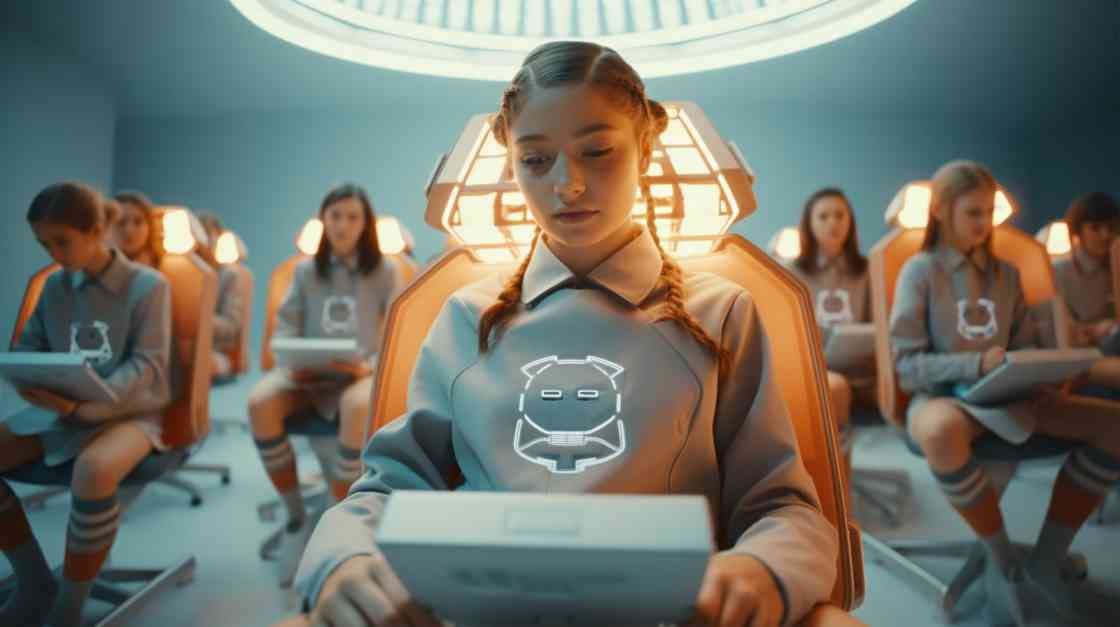The Digital Tutor: A New Era of Learning
Do you recall the days you spent waiting impatiently for your teacher to finish working with another student? Or those exasperating evenings spent scouring textbooks in an attempt to comprehend a difficult idea? However, the advent of chatbots may mean that those days are drawing to an end.
Conversational AI (Chatbots), the virtual assistants we use on a daily basis, is having a big impact on education. Imagine having a personal instructor at your disposal around-the-clock, willing to address your concerns, break down complex subjects, and even create individualized study schedules. Doesn’t it sound like a dream? That is, in fact, coming to pass.
What Exactly Is a Chatbot for Education?
In essence, an educational chatbot is a computer program created to communicate with students by giving them knowledge, responding to their inquiries, and providing help. It’s similar to having a wise friend who is constantly willing to impart knowledge. These chatbots, in contrast to conventional virtual assistants, are designed with the educational setting in mind and come with an extensive knowledge base of subjects and instructional resources.
Consider them to be interactive digital textbooks that facilitate discussion. They are able to give practice problems, examples, and straightforward explanations of difficult subjects. In order to make learning more efficient and interesting, several chatbots can even adjust to the learning preferences of their users.
How Do Chatbots Work Their Magic?
Behind the scenes, educational chatbots rely on a combination of artificial intelligence (AI), natural language processing (NLP), and machine learning. AI gives the chatbot the ability to think and learn, NLP helps it understand human language, and machine learning allows it to improve over time based on interactions with students.
When you ask a chatbot a question, it processes your query using NLP to understand what you’re asking. Then, it taps into its knowledge base to find the most relevant information. Using AI, it formulates a response in a way that’s easy to understand.
The Benefits of Having a Chatbot as Your Study Buddy
- Instant Gratification: Need help with a homework problem at midnight? No problem! Educational chatbots are available 24/7, ready to assist you whenever you need them.
- Personalized Learning: Every student learns differently. Chatbots can adapt to your learning style, pace, and preferences, creating a customized learning experience.
- Improved Engagement: Chatbots can make learning fun with interactive quizzes, games, and simulations. This can sustain pupils’ motivation and attention spans.
- Increased Accessibility: Students with disabilities can benefit greatly from chatbots, as they can provide information in different formats, such as text, audio, or images.
- Teacher Support: Chatbots can handle routine tasks like answering frequently asked questions, freeing up teachers to focus on more complex and creative teaching methods.
Chatbots: Your Personal Learning Assistant
Imagine having a tutor who knows exactly where you’re struggling and can provide targeted support. That’s the power of personalized learning with chatbots.
- Adaptive Learning: Chatbots can track your progress and adjust the difficulty level of questions accordingly. If you’re struggling with a particular concept, the chatbot can provide additional explanations or examples.
- Customized Learning Paths: Based on your interests and goals, chatbots can recommend specific learning materials and activities. This sustains your motivation and attention.
Overcoming Challenges
Although chatbots provide many advantages, there are drawbacks to take into account.
- Accuracy and Reliability: While chatbots are getting smarter every day, they can still make mistakes. It’s essential to verify information from multiple sources.
- Data Privacy: Chatbots collect data about students, which raises concerns about privacy. It’s crucial to ensure that student data is handled securely and responsibly.
- Human Connection: While chatbots can provide valuable support, they can’t replace the human connection between teachers and students. It’s important to maintain a balance between human interaction and technology.
The Future of Education:AI and Humans CollaboratingAs chatbots collect and process st
The future of education is likely to involve a collaboration between humans and AI. Chatbots can be powerful tools for teachers and students, but they should be used as supplements, not replacements.
Teachers can use chatbots to automate routine tasks, freeing up time for more creative and engaging teaching methods. They can also use chatbots to provide additional support to students who need it.
Ultimately, the goal is to create a learning environment where technology enhances the human experience. By combining the best of both worlds, we can create a future where every student has the opportunity to reach their full potential.
Ethical Implications: Navigating the Moral Compass
Chatbots, while promising, introduce a new set of ethical considerations. As powerful as they are, it’s crucial to use them responsibly.
Human Interaction vs. Machine Interaction
One of the primary concerns is the balance between human interaction and machine interaction. While chatbots can provide efficient and immediate support, they cannot replicate the nuances of human-to-human interaction. Building strong relationships, understanding emotional cues, and fostering empathy are skills best developed through human connection.
It’s essential to avoid excessive reliance on chatbots, ensuring that they complement, rather than replace, human interaction in the learning process.
Bias and Fairness
A significant challenge lies in ensuring that chatbots are free from bias. If not carefully designed, chatbots can perpetuate stereotypes and inequalities. For instance, a chatbot trained on biased data might provide inaccurate or unfair information.
It’s imperative to use diverse and representative datasets to train chatbots and to continually monitor their output for signs of bias.
Data Privacy and Security
As chatbots collect and process student data, protecting privacy becomes paramount. Sensitive information such as learning styles, academic performance, and personal details must be handled with utmost care.
Strict data protection measures should be in place to prevent unauthorized access and misuse of student information. Transparent communication about data collection and usage practices is also essential to build trust between schools, students, and parents.
The Future of Education: A Human-AI Partnership
The future of education is likely to be a collaborative effort between humans and AI. Chatbots can serve as valuable tools to enhance the learning experience, but they should not be seen as a replacement for teachers.
Teachers will continue to play a crucial role in inspiring students, fostering critical thinking, and developing essential life skills. Chatbots can augment their efforts by providing personalized support, automating routine tasks, and delivering engaging learning experiences.
By embracing technology while prioritizing human connection, we can create a future where education is accessible, inclusive, and tailored to the needs of every learner.
Conclusion
Chatbots are undeniably transforming the education landscape. Their ability to provide instant answers, personalized support, and adaptive learning experiences holds immense potential. However, it’s essential to approach this technology with caution, considering ethical implications and the importance of human interaction.
By striking the right balance between human and artificial intelligence, we can harness the power of chatbots to create a more effective, engaging, and equitable education system for all.




